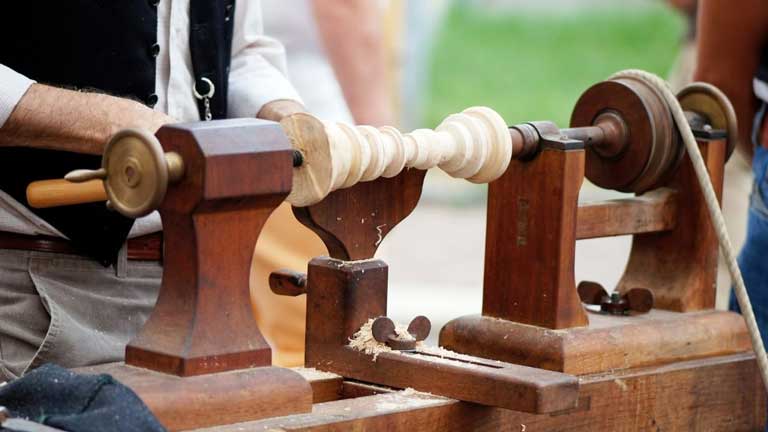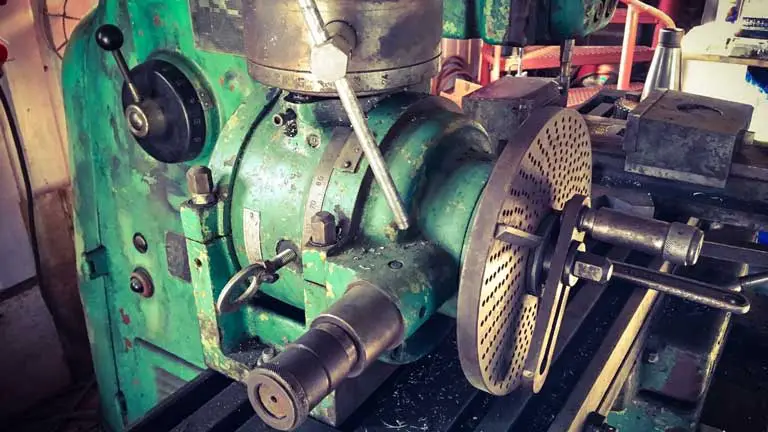In your life, you have probably seen beautiful wooden baseball bats, perfectly shaped with shiny surfaces, or metallic pieces that can make even a mirror shy because of their crystal clear surface.
You must have thought to yourself that how can a haphazard log or dark metal become such a piece of art?
Well, the answer is Lathe, which comes in two versions- wooden and metal. These spectacular and unique machines may not seem attractive but when it’s creating a piece of art, it’s something to behold. Spinning with the speed of light and shunning away from the unwanted parts, these two can create masterpieces. However, wood or metal lathe are quite different and serve different purposes.
If you are interested in the craft, then this article is a must-read. It is imperative for you to understand the differences, as the two lathes cannot be replaced by one another.
The basic working principle behind metal and wood lathe is the same; secure, turn and create. In a lathe, you have a chuck, in which the workpiece is stuck. The workpiece is held fast with a bracket at the opposite end. The chuck turns and the masterpiece unravels.
1. Origin
A wood lathe is an ancient tool. It emerged in 1300 BC, while the metal lathe came into existence during the industrial revolution. The metal lathe was equipped with sturdier components to perform the heavy cutting. Although, both lathes evolved with time, but the traditional lathe provides the basic principles of working.

2. Physical Dimensions
Wood lathes range from 30 to 600 kg, while metal lathes range from 22 to 1700 kg. Wood lathe requires strong biceps as lots of manual labor is involved. However, if you can customize it and attach a motor to wood lathe, you might get a computerized lathe. Metal lathes are computerized and can be configured according to the end result you want to achieve.
Wood lathe is used to shape wood. Simplicity is the key attribute of a wood lathe. It’s simple, comes in both table as well as floor forms. It is both light and portable. Metal lathes are used for working on metals and wood. They are very complex to operate. The key attribute of a metal lathe is precision. It’s heavier and cannot be mounted easily, but it’s stronger.
3. Affordability
It is a subjective choice, depending upon your interests. If you want to work as an individual you can get both, but remember that a lower-end mini-wood lathe is economical considering that a metal lathe is at least four times more expensive.
If you are thinking about an industrial unit or working with metal then you can get as many automatic lathes as you want. However, wood lathes are easy to maintain as compared to a metal lathe. Metal lathe can be a strain on the financial side and requires more skill.
4. The Power
500W is sufficient for low-end machines, but be careful with the types of wood and metal, you are going to use in the machine. Keeping your safety gear in check, you can go up to 2,250 W with the wood lathe and up to 5,500 W in metal.
Remember that the wood lathe is easy to handle. It’s under your control but the mechanical aspect of a metal lathe makes it risky and hazardous. The amount of power generated can cause serious damage.
Due to the extraordinary power, a machine lathe operator has to take proper training in running the magnificent beast of a machine as well as a safety course in industrial settings.
5. Turning Length
Turning is a technical aspect and needs careful understanding.
For wood lathes, the maximum turning length starts at 320mm but can reach up to 1,270mm. Next comes the maximum diameter capacity of the turning that determines the width of the workpiece. 400mm is the ideal capacity for working with a wood lathe.
As for the metal lathe opt for a length of 400 mm. 1,500 mm turning length is used for professionals. As for the maximum diameter, 200mm is good to start with.
Read our review on Woodturning Tools sets
Because of the complex nature of a metal lathe, you should remember that there are other data to take into account too such as the longitudinal settings, however there is no need to panic! Many of these settings are already regulated. That said, you should be wary of the complicated settings of a metal lathe.

6. Products
Wood lathes are used to produce furniture components, stair knobs, decorative furniture, and baseball bats. While a metal lathe is used to create various machine parts.
7. Hazards
The unwanted wooden specks and dust are a cause of concern, while the metal pieces from the cutting process of a metal lathe are hazardous. A metal lathe can also damage the ears because of the extraordinary noise it creates. The device should be firmly set on the ground especially the metal lathe.
Avoid any type of entanglement while dealing with the metal lathe. Even though a wooden lathe is dangerous as well, but metal lathe can be a disaster. You should wear proper eye safety glasses, face shield, etc. to keep yourself safe.
8. Components
The most important aspects that distinguish a metal lathe from a wooden machine are the tools. Because of the complex nature of the device, the metallic version has more components.
Tool Holders
In the wooden version, the tool is placed to reduce the effort and to guarantee the constancy of the cut. It must be adjustable in height and can sometimes be oriented to 180º to place it within the axis of a piece.
In the metal version, the cutting tools are adjustable like the wooden ones, however, they must also allow transverse displacement. Above all, the configuration must be optimal to get the quality cut.
Copy Device
A metal lathe has a copier device that is responsible for following the layout of a computerized template that enables it to create identical pieces. Large industrial units take extreme pains in setting and configuring the blueprint.
Emergency Button
It’s the digital display setup that indicates the rotation speed and the desired measurements with start/stop control.
9. Can I Use Wood Lathe For Metal?
One thing that you must know is that wood lathes perform the actions of cutting, polishing, and sanding, but they can be used to polish metal as well. This uniqueness is because the machine is operated by hand and is easily manageable.
On the other hand, the metal lathe is used for cutting and shaping only. The polishing and sanding cannot be done on it. Therefore, the answer to this question is no you cannot use wood lathe for metal.
Conclusion
Summing up, both wood and metal lathe both have their own importance, however, they are quite different from each other too. Wood lathe is perfect for beginners while metal lathe is great for those who are professional. Moreover, with both metal and wood lathe you can cut or polish a material and the high velocity of the turning will help you to get the finest object.
Metal and wood lathes are helpful in different ways. They help you to get the purpose of your craft: that is the end product you want to get. They have dimensions that are suitable to create the workpiece and the power that would make the process less cumbersome. So, which one is your favorite?
Leave a Reply